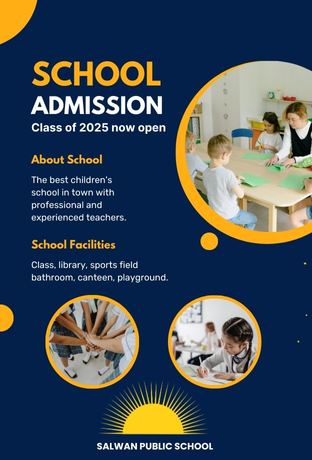Understanding Community-Driven Education
Community-driven education represents a paradigm shift from traditional education models that typically prioritize standardized curricula and teacher-led instruction. This approach emphasizes the active participation of community members, ensuring that education is tailored to the unique cultural, social, and economic contexts of the locality. By engaging local stakeholders, such as parents, businesses, and community organizations, educators can create a curriculum that not only reflects community values but also leverages the rich resources available within the community itself.
The integration of local community resources into educational practices leads to what is known as culturally relevant pedagogy. This educational framework acknowledges and validates the diverse backgrounds of students, promoting learning experiences that resonate with their lived realities. Culturally relevant pedagogy fosters an inclusive environment where students feel connected to their curriculum, thereby enhancing motivation and academic achievement. Moreover, when children see their community’s history and contributions integrated into their learning, they are likely to develop a stronger sense of identity and belonging.
Participatory learning is another crucial element of community-driven education. It involves students actively engaging in the learning process through collaboration with community members. Such interactive learning experiences can include local projects, community service, or partnerships with organizations that enhance educational relevance. This method not only reinforces knowledge acquisition but also equips students with essential life skills such as critical thinking, problem-solving, and teamwork. Furthermore, the process empowers children to become responsible, active citizens who understand their role within their community.
Overall, the essence of community-driven education lies in its commitment to making learning meaningful and contextually relevant. By fostering community engagement and integrating local culture into educational practices, children gain a more enriching and holistic education that prepares them for the complexities of the world around them.
Benefits of Local Community Involvement
Local community involvement plays a pivotal role in enhancing childhood education by fostering a synergistic relationship between educational institutions and their surrounding communities. One primary advantage is the significant improvement in student engagement. When students see their community actively participating in their education, they are more likely to exhibit enthusiasm, curiosity, and a vested interest in their learning. Community members can contribute volunteer hours, share their expertise, or provide resources, all of which enrich the educational experience and capture the students’ attention.
Enhanced learning experiences are another critical benefit derived from local community involvement. By integrating community resources, such as local museums, government institutions, and businesses, schools can provide practical learning opportunities that extend beyond the classroom. For instance, a partnership with a local science center can result in hands-on workshops that bring scientific concepts to life. This kind of collaboration not only deepens understanding but also contextualizes academic knowledge within real-world scenarios, showing students the relevance of their studies.
Furthermore, local community involvement fosters a sense of belonging among children. When educational curricula reflect the values, traditions, and culture of the community, students develop a stronger identity and connection to their environment. This is particularly important in a multicultural society where recognizing diverse backgrounds encourages inclusivity. Programs such as community storytelling or cultural festivals allow students to engage with their heritage, promoting pride and awareness of their community’s richness.
Successful community partnerships serve as excellent case studies highlighting these advantages. For example, joint initiatives like reading programs conducted in collaboration with local libraries demonstrate the positive impact of community involvement. They not only boost literacy rates but also create a supportive network for families, thereby underscoring the emotional and psychological benefits for children when their communities are integrated into their educational journey.
Strategies for Effective Community Engagement
Engaging local communities in childhood education curriculum is crucial for fostering an environment that supports student learning and growth. There are several practical strategies that educators and schools can implement to promote effective community involvement. One effective method is to organize workshops that bring together parents, teachers, and local organizations. These workshops can serve as platforms for sharing ideas, resources, and best practices, ultimately leading to a collaborative approach in supporting children’s education.
Community events, such as fairs or informational nights, provide another opportunity for schools to engage families and local stakeholders. By creating informal gathering spaces, schools can encourage dialogue between educators and community members, helping to build trust and understanding. During these events, schools can showcase student work and highlight the role of community organizations in promoting positive educational outcomes. This not only strengthens relationships but also emphasizes the value of diverse contributions to the educational experience.
Partnership programs between schools and local businesses or non-profit organizations can enhance community involvement. Such collaborations may include mentorship programs, sponsorships for school activities, or resource-sharing initiatives that benefit both students and the community. Schools can leverage these partnerships to provide students with enriching experiences that extend beyond the classroom, thereby increasing engagement with the curriculum.
Communication is key to effective community engagement. Schools should prioritize open lines of communication, ensuring that parents are informed and feel comfortable discussing their thoughts and concerns regarding the curriculum. This can be achieved through regular newsletters, social media updates, and parent-teacher conferences. Creating inclusive environments is essential for encouraging participation from a diverse range of community members. By recognizing and valuing different perspectives, schools can foster a sense of belonging and support for all families, leading to a more enriching educational experience for children.
Case Studies: Successful Examples of Community Involvement
Community involvement in childhood education can take various forms, and real-life case studies offer invaluable insight into the strategies employed, roles of stakeholders, and achieved outcomes. One noteworthy example is the “Community Partnership for Early Learning” initiative in a small Midwestern town. This program successfully integrated local organizations, such as libraries, parks, and health centers, into the curriculum. Stakeholders worked together to create resources that extended beyond the classroom, fostering a holistic approach to child education. The initiative faced challenges, such as coordinating schedules and securing funding, but the diverse backgrounds of the stakeholders provided fresh perspectives that helped overcome these hurdles.
Another prominent case study is the “Reading Roundtable” in a coastal city, where local businesses and educational institutions partnered to promote literacy among children. Volunteers from businesses provided mentorship and reading sessions at local schools. This program not only improved literacy rates among students but also built strong connections between local businesses and schools, showcasing the importance of community solidarity. The primary challenge in this instance was aligning the interests of businesses with educational goals, but brainstorming sessions helped reconcile these objectives.
The “Garden Project” in an urban school district is yet another successful example. This initiative involved parents and community members in creating and maintaining a school garden. It effectively integrated science, nutrition, and environmental education into the curriculum. Stakeholder involvement helped promote sustainability and healthy eating habits among students. Challenges included initial hesitant participation from parents and logistical concerns regarding location and resources. However, community engagement strategies, such as workshops and informational sessions, ultimately fostered a sense of belonging and ownership of the educational experience.
These case studies exemplify the multifaceted benefits of local community involvement in childhood education. They serve as inspirational models for educators and communities aiming to enhance their curricula through active participation and collaboration.






















